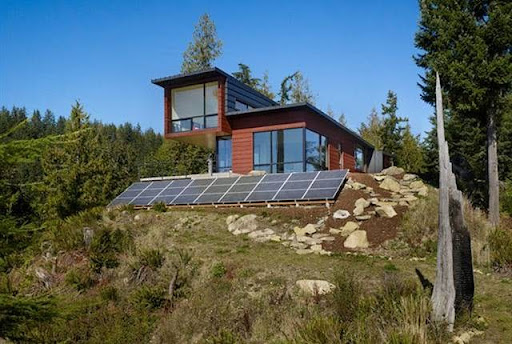How Is Sustainable Jetty Design Shaping Coastal Projects in 2025?
Coastal development is being revolutionized in 2025. Engineers, environmentalists, and policymakers across the globe are reconsidering jetty design and construction to more effectively meet human needs while protecting vulnerable coastal ecosystems. The conventional method of pouring hard structures, such as a pier, out into the water is evolving into building concepts that account for ecological consciousness, climate adaptation, and long-term durability. As communities confront sea level rise and stronger storms, sustainable jetty design is emerging as a foundation of marine construction to lead the future of coastal projects.
Rethinking Jetty Purpose and Function
Historically, jetties were constructed with one bias: to stabilize shorelines, provide safe harbor entrances, or keep sediment at bay. Though these are still valid functions, the environmental impacts of such structures—disturbed tidal hydraulics, loss of intertidal habitat—have been dramatic. There is a more global view by 2025. Jetties are no longer considered merely as breakwaters or harbor aids, but as multi-use facilities.
New jetty schemes merge ecological and engineering requirements, including habitats for marine fauna, renewable energy components such as tidal turbines, and recreational areas for cities. This holistic outlook has revolutionized the manner in which coastal managers order marine construction to harmonize engineering durability with environmental care.
Climate-Resilient Coastal Infrastructure
Climate change is one of the most powerful pressures pushing the design of jetties today. Rising sea levels, combined with more frequent and more severe storms, have left the traditional concrete banks on the water’s edge exposed. Coastal towns just cannot carry short-term band-aids that crack under pressure. Instead, the focus is on adaptive, flexible jetties that are resilient in the face of changing conditions.
Contemporary versions frequently feature modular components that can be upgraded or modified over time. Low-carbon concrete and geosynthetics that enhance strength while minimizing the material’s environmental footprint are just a few examples. Some projects also include the use of living shorelines – think oyster reefs or mangroves – alongside the jetty, which absorb wave energy. in a natural wick for well-blended energy solution in marine-construction strategies: techno-ecological evolution.
Innovations in Materials and Methods
The building materials for jetties are changing quickly, too. Traditional reinforced concrete is being substituted or supplemented with options that are more environmentally friendly and less harmful to the marine environment. For instance, portions of eco-concrete mixtures are designed with textures that attract barnacles, mussels, and algae, turning the jetty into an artificial reef.
Recycled plastics and composites are becoming more prevalent, reducing waste and providing longer life in corrosive saltwater conditions. With 3D printing technology taking another step ahead, it now holds the capability to create complex structural designs that could ensure maximum strength with minimal usage of resources. These new materials and techniques take marine construction to a whole new level, providing not only solid, safe projects but ones that have ecological benefits as well.
Community Engagement and Cultural Considerations
Another key change in 2025: jetty projects start working with local communities. Sustainable design is not about the physical building, but about its place in cultural and economic life. Fishing villages, tourist towns, and native populations have long depended on jetties for both their livelihoods and their identities.
Contemporary projects focus on participatory designs, where jetties’ designs acknowledge cultural traditions and breathe new life into sustainable development. Public input influences decisions on access, day use, recreation, and the degree of integration within the surrounding landscape. This participatory approach is now the norm for marine construction, promoting the notion that infrastructure should be as much for serving people as it is for serving the coast.
Policy, Regulation, and Global Standards
International policy frameworks are further driving the development of sustainable jetty designs. Many coastal nations 2025 impose more stringent environmental assessments by, and require new jetties to provide “clear ecological benefits.” Much like green building, certification systems now exist to rate marine infrastructure based on energy consumption, biodiversity enhancement, and carbon footprint.
This regulatory tailwind also spurred innovation and cross-border collaboration. Beachside engineers also have a global best practices exchange network, so every project gets a knowledge boost. As marine construction companies adjust to these standards, they are competing not just on cost, but on sustainability performance, pushing the whole industry forward.
Looking Ahead: The Future of Sustainable Jetties
Over the next decade, sustainable jetty design is anticipated to become the norm rather than the exception. Equipped with digital tools such as AI-driven simulations and remote monitoring, they can now forecast how jetties will interact with tides, storms, and marine life decades into the future. This predictive power leads to smarter decisions that reduce maintenance costs while protecting ecosystems.
Additionally, collaborations between governments, private companies, and community members are making jetty projects economically feasible and socially inclusive. The combination of innovation, ecology, and community principles really does seem to indicate the future of coastal projects is in harmony, not conflict.
Conclusion
By 2025, sustainable jetT design is influencing coastal projects in a new way that captures a transformed relationship between human ambition and environmental responsibility. By redefining what a jetty can be, marine construction isn’t about erecting structures in the sea—it’s about building resilient, living systems that shield coastlines, bolster communities, and respect the fragile balance of the ocean.






